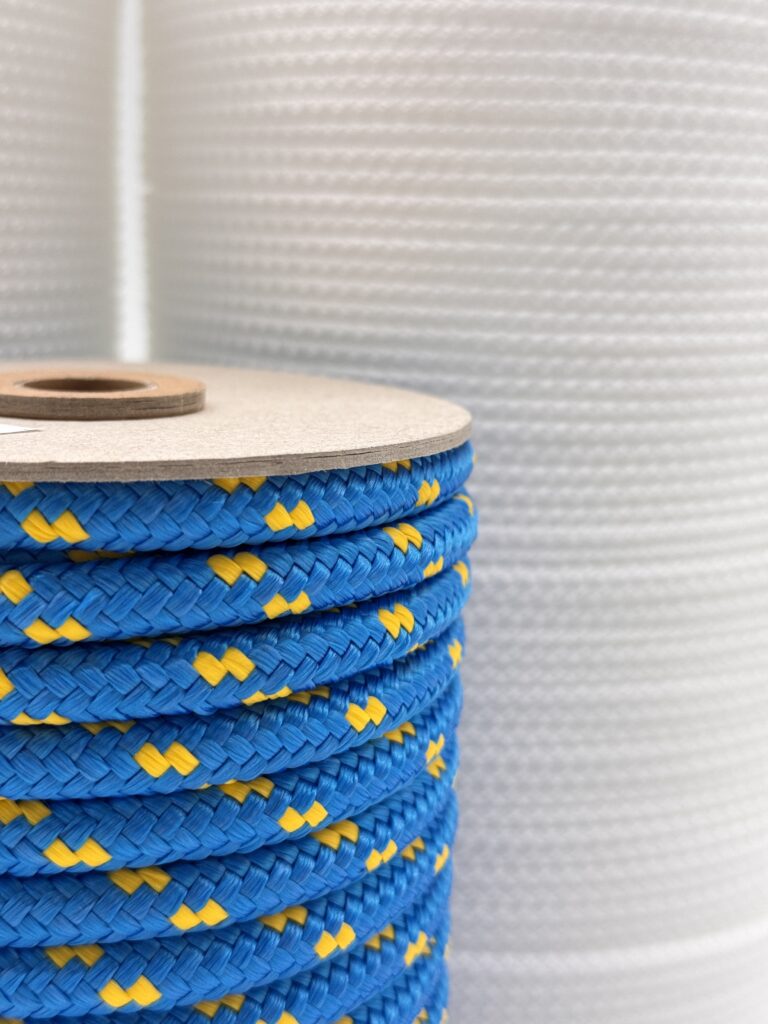
Production of rubber cords and ropes – step by step
Modern production of rubber cords, elastic ropes, and braided ropes requires a mix of advanced machines, expert knowledge, and top-quality materials. Today, ropes, cords, and expanders are used in many areas – from heavy industry and construction to sports and recreation. To meet high standards of strength, durability, and safety, every step of the process must be done carefully.
Step 1 – choosing high-quality yarn
Every production process starts with selecting the right yarn. The material comes from trusted suppliers to make sure it’s strong and long-lasting. The most popular fibers include:
- Polypropylene – light and strong, resistant to water, sunlight and chemicals.
- Polyester – UV-resistant and great for outdoor use.
- Cotton – natural and soft, perfect for everyday use.
The final choice depends on how the rope or cord will be used.
Step 2 – two ways to make cords and ropes
There are two main ways to make cords and ropes – using braiding machines or knitting machines.
Option A – braiding machines
Yarn winding
After choosing the material, it is wound onto spools using special machines. This helps keep the yarn even and smooth.
Braiding process
The spools go to braiding machines. Here, the yarn is turned into braided rope or elastic rope. The structure can vary:
- Braided ropes with a cord as a core – an extra thin cord is added for more strength and protection.
- Elastic rubber cord – also called expander. It has latex threads inside, making it stretch up to 150%. It is popular in sports and recreation.
Option B – knitting machines
This method is used to make knitted cords. Knitting machines use fine needles to create flexible and tight cord structures.
- Knitted cords with core – stronger and more stable, good for industrial use.
- Knitted cords without core – more flexible, used in textiles, clothing, and decorations.
Step 3 – quality control
No matter how it’s made, each rope, cord or elastic rubber rope is tested for:
- Strength and tension resistance
- Wear and abrasion resistance
- Elasticity and finish quality
This ensures that every elastic cord, rope or cord is safe and ready to use – even in tough conditions.
Summary – technology, knowledge and materials
Advanced production of rubber cords, ropes, and cords is based on modern machines, expert knowledge, and a strong focus on high-quality materials. As a result, the products are strong and reliable, used in many areas of everyday life and industry. Whether for industrial, construction, sports, or recreational use, high-quality rubber cords and ropes are essential for safety and comfort.